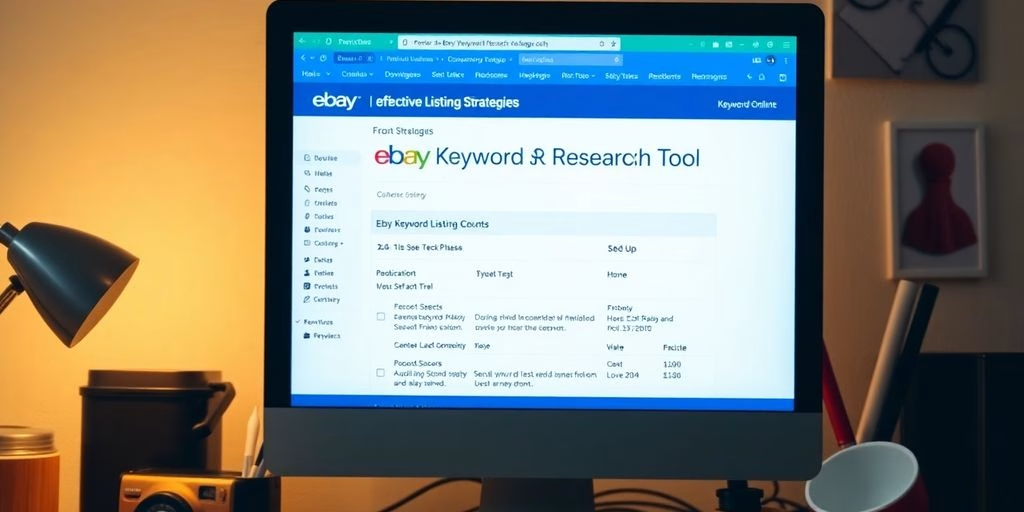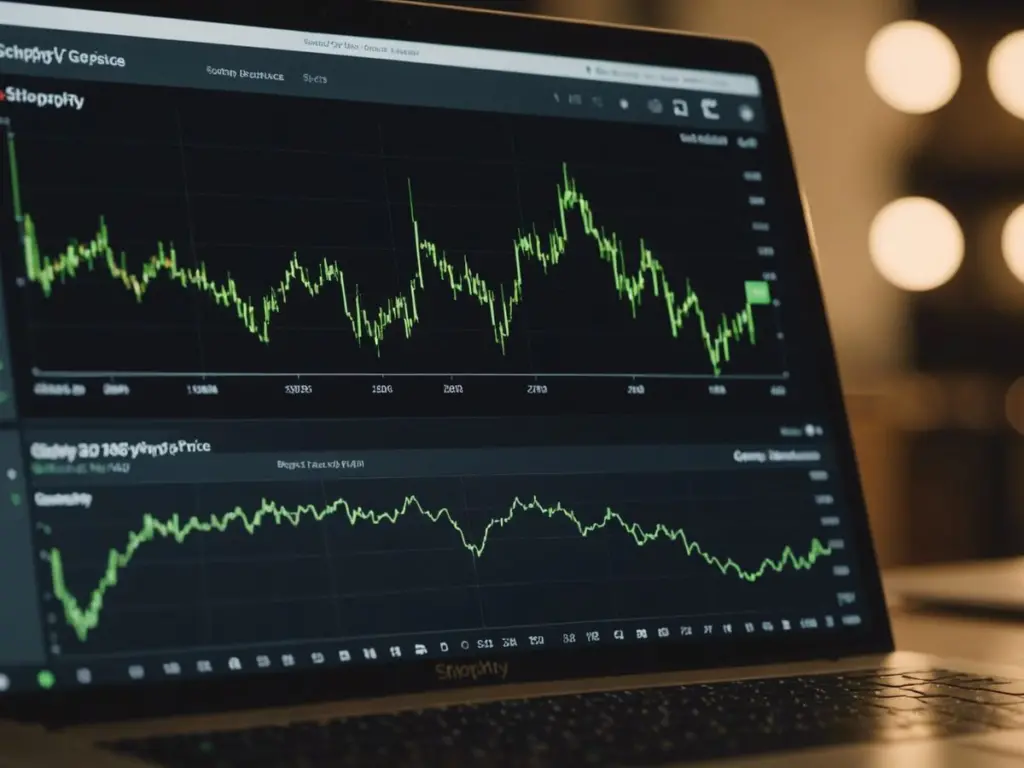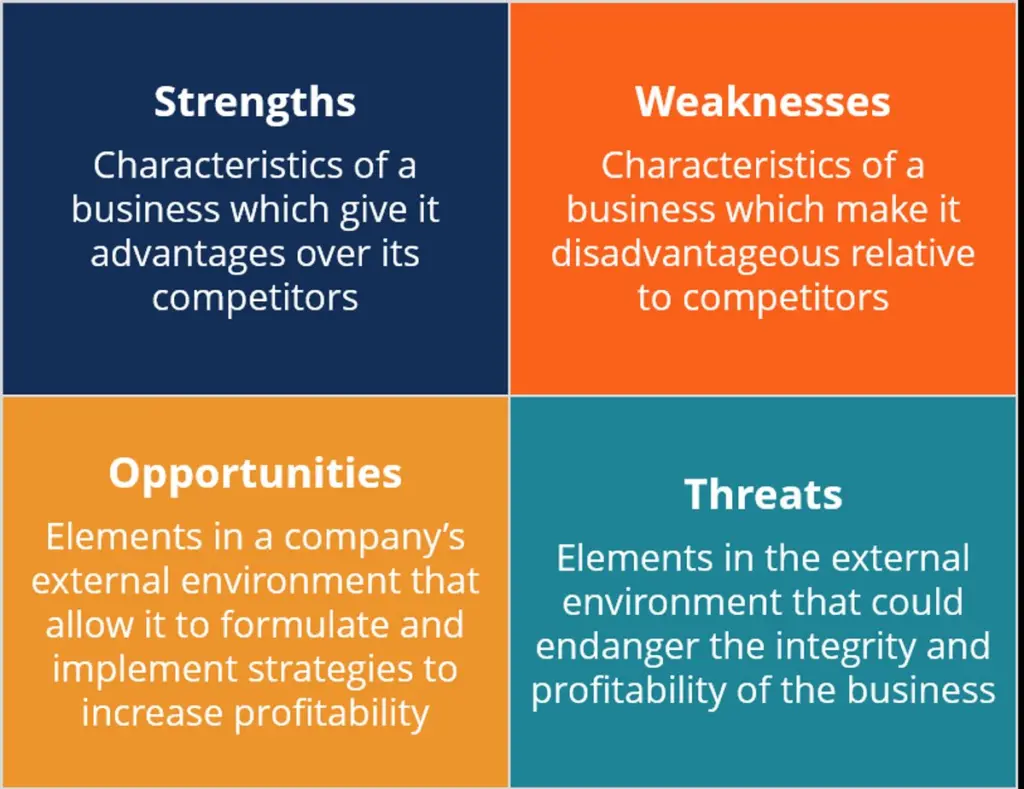In the fast-paced world of online retail, managing your inventory effectively is key to success. An inventory management system for ecommerce can help streamline operations, prevent stock discrepancies, and ultimately enhance customer satisfaction. This guide will walk you through the essentials of setting up and optimising your inventory management system, ensuring your ecommerce business runs smoothly and efficiently.
Table of Contents
ToggleKey Takeaways
- An inventory management system is crucial for tracking stock levels in real time, helping to avoid overstock and stockouts.
- Automated reordering processes save time and reduce the risk of running out of popular products.
- Integration with various sales channels ensures consistent inventory updates and prevents overselling.
- Regular audits and performance evaluations can help identify areas for improvement in your inventory management practises.
- Emerging technologies like AI and predictive analytics can offer valuable insights for optimising inventory levels.
Understanding The Importance Of An Inventory Management System For Ecommerce

Defining Inventory Management
So, what exactly is inventory management? Well, it’s more than just knowing what you have in stock. It’s about strategically managing the entire flow of goods, from when you order them to when they end up in a customer’s hands. Effective inventory management ensures you have the right products, in the right quantities, at the right time. This involves forecasting demand, managing storage, and controlling costs. Think of it as the backbone of your entire operation. It’s easy to overlook, but trust me, getting this right can make or break your business. It’s not just about counting items; it’s about making smart decisions that impact your bottom line. A good system helps you avoid overstocking, which ties up capital, and stockouts, which lead to unhappy customers. It’s a balancing act, but with the right tools and strategies, you can master it.
The Role Of Inventory In Ecommerce Success
Inventory plays a massive role in whether your ecommerce business sinks or swims. Think about it: if you can’t fulfil orders promptly, customers will go elsewhere. Effective inventory management directly impacts customer satisfaction, repeat business, and ultimately, your brand’s reputation. It’s not just about having products available; it’s about having them available efficiently. This means minimising storage costs, reducing waste, and optimising your supply chain. A well-managed inventory system also allows you to respond quickly to changing market demands and trends. You can adapt your stock levels to meet customer needs, launch new products with confidence, and stay ahead of the competition. It’s about being agile and responsive, and that all starts with a solid handle on your inventory. You can track products effectively with a good system.
Consequences Of Poor Inventory Management
Poor inventory management can lead to a whole host of problems that can seriously damage your ecommerce business. We’re talking lost sales, increased costs, and damaged reputation. Imagine constantly running out of popular items – customers will get frustrated and take their business elsewhere. On the flip side, overstocking ties up capital and leads to storage costs and potential losses from obsolete or damaged goods. It’s a lose-lose situation.
Here’s a quick rundown of the potential pitfalls:
- Lost Sales: Stockouts mean missed opportunities to generate revenue.
- Increased Costs: Overstocking leads to higher storage and insurance expenses.
- Damaged Reputation: Unhappy customers are less likely to return and may leave negative reviews.
Poor inventory management can create a ripple effect, impacting everything from cash flow to customer loyalty. It’s essential to invest in a system that helps you avoid these common pitfalls and optimise your inventory levels. You can save money by avoiding these issues.
Ultimately, the goal is to find that sweet spot where you have enough stock to meet demand without tying up excessive capital. It’s a challenge, but with the right approach, it’s definitely achievable. You can also look at Shopify pricing to help you manage your inventory.
Key Features Of An Effective Inventory Management System

Okay, so you’re thinking about getting serious with your inventory. Good move! But what should you actually look for in a system? It’s not just about counting boxes; it’s about making your whole operation smoother. Let’s break down some must-have features.
Real-Time Inventory Tracking
This is the big one. You need to know, right now, what you have, where it is, and how many you have. No more guessing or relying on spreadsheets that are probably out of date the second you save them. Real-time tracking means you can see your stock levels as they change, thanks to inventory management software. This helps you avoid stockouts and overstocking, which both eat into your profits. Think of it like this: you wouldn’t drive a car without a fuel gauge, would you? So why run your business without knowing your inventory levels?
Automated Reordering Processes
Imagine never having to manually check stock levels and place orders again. Sounds good, right? An effective system automates the reordering process. You set minimum stock levels, and when an item drops below that, the system automatically generates a purchase order. This not only saves you time but also reduces the risk of human error. Plus, some systems can even predict when you’ll need to reorder based on sales trends. It’s like having a personal inventory assistant that never sleeps. Here’s what automated reordering can do for you:
- Reduces stockouts
- Minimises overstocking
- Saves time and resources
Integration With Sales Channels
If you’re selling on multiple platforms – your own website, Amazon, eBay, etc. – you need a system that integrates with all of them. This means that when a sale is made on one channel, the inventory is automatically updated across all channels. No more overselling or having to manually adjust stock levels in multiple places. It’s all connected. This is what we call unified inventory tracking, and it’s a game-changer for multichannel ecommerce businesses. Think about it: one central hub for all your inventory data, regardless of where the sale came from. It’s a beautiful thing.
Having a system that integrates with all your sales channels is not just convenient; it’s essential for accuracy and efficiency. It prevents overselling, reduces errors, and gives you a clear picture of your overall inventory position.
Ultimately, these features work together to give you better control over your inventory, reduce costs, and improve customer satisfaction. And that’s what it’s all about, isn’t it?
Strategies For Implementing An Inventory Management System

So, you’re thinking about getting an inventory management system up and running? Good move! It’s not always a walk in the park, but with a bit of planning, you can make the whole process much smoother. Let’s break down some key strategies.
Assessing Your Business Needs
First things first, you need to figure out exactly what you need from a system. What are your pain points right now? Are you constantly running out of stock? Or maybe you’ve got too much sitting around gathering dust? Think about the size of your business, the number of products you sell, and how many sales channels you’re using. All of this will help you choose the right system. Consider these points:
- Current inventory volume.
- Number of transactions per month.
- Integration requirements with existing systems.
Choosing the Right Software
Okay, so you know what you need. Now it’s time to pick some software. There are loads of options out there, from simple spreadsheets to fancy cloud-based systems. Think about your budget, how easy the software is to use, and whether it can grow with your business. Don’t just go for the cheapest option – it might end up costing you more in the long run if it doesn’t do what you need it to. Look for software that offers real-time inventory tracking and automated reordering.
Training Staff For Effective Use
Getting the software is only half the battle. You need to make sure your staff know how to use it properly. This means providing training and support. Make sure everyone understands how to enter data, run reports, and troubleshoot any problems. If your team isn’t on board, the whole system will be a waste of time and money. Consider these training methods:
- Hands-on workshops.
- Online tutorials.
- Designated support personnel.
Implementing an inventory management system is a big step, but it’s worth it in the long run. By taking the time to assess your needs, choose the right software, and train your staff, you can streamline your operations, reduce costs, and improve customer satisfaction. It’s all about finding the right fit for your business and making sure everyone is on board. Don’t forget to consider Shopify’s pricing plans if you’re using that platform.
Advanced Techniques For Optimising Inventory Management
Utilising Predictive Analytics
Predictive analytics is a game-changer. Instead of just reacting to what’s already happened, you can start anticipating future demand. This means fewer stockouts and less overstocking. It’s all about using data to make smarter decisions. Predictive analytics uses historical data, seasonality, and even external factors like marketing campaigns to forecast demand.
- Analysing past sales data to identify trends.
- Considering seasonal variations that impact demand.
- Incorporating marketing campaign data for accurate forecasting.
Automated Reordering Processes
Manual reordering is slow and prone to errors. Automating this process can save you time and money. Set up systems that automatically trigger reorders when stock levels hit a certain point. This ensures you always have enough stock without overdoing it. It’s about setting up rules and letting the system do the work. You can enhance e-commerce inventory management by automating the reordering process.
- Setting up reorder points based on sales velocity.
- Automating purchase order generation.
- Integrating with supplier systems for real-time stock updates.
Implementing Just-In-Time Inventory
Just-In-Time (JIT) inventory is all about minimising waste and holding costs. The idea is to receive goods only when you need them for the production process. It requires a very efficient supply chain and accurate demand forecasting. It’s not easy to implement, but the rewards can be significant. JIT can drastically reduce warehousing costs.
JIT isn’t for everyone. It works best when you have reliable suppliers and stable demand. If your supply chain is prone to disruptions, or your demand fluctuates wildly, JIT might not be the best option.
Leveraging AI For Inventory Insights
AI can take your inventory management to the next level. It can analyse vast amounts of data to identify patterns and insights that humans might miss. This can lead to more accurate demand forecasting, better stock level management, and improved efficiency. An AI system enhances inventory optimisation by dynamically adjusting reorder points based on real-time data.
- AI algorithms can detect subtle demand patterns.
- Dynamic optimisation adjusts order quantities based on real-time data.
- Anomaly detection identifies potential issues before they become problems.
Here’s an example of how AI can improve inventory management:
| Feature | Traditional Method | AI-Powered Method |
|---|---|---|
| Demand Forecasting | Based on past sales data and simple averages | Considers multiple variables, including weather and social media trends |
| Stock Level Optimisation | Fixed reorder points based on historical data | Dynamic reorder points adjusted in real-time |
| Anomaly Detection | Manual review of reports | Automated alerts for unusual ordering patterns |
By using these advanced techniques, you can significantly improve your inventory management and boost your bottom line. Remember to optimise inventory for cost reduction and improved supply chain efficiency.
Common Challenges In Ecommerce Inventory Management

Running an ecommerce business isn’t always a walk in the park, especially when it comes to managing your stock. You might have the best website and marketing, but if your inventory is all over the place, you’re going to run into problems. Let’s look at some common issues and how to tackle them.
Dealing With Overstock And Stockouts
One of the biggest headaches is getting the balance right between having too much stock and not enough. Overstocking ties up your cash in products that aren’t selling, while stockouts mean missed sales and unhappy customers. It’s a tricky balancing act.
- Overstocking: This happens when you buy too much of a product, and it sits in your warehouse, gathering dust. You’ve paid for it, but it’s not making you any money. Plus, you might have to discount it later to get rid of it, cutting into your profits.
- Stockouts: On the flip side, running out of popular items can really annoy customers. They might go to a competitor, and you lose a sale. It can also damage your reputation if it happens often.
- Forecasting: The key to avoiding both is good forecasting. Look at past sales data, trends, and even external factors like the weather or big events to predict what you’ll need. It’s not an exact science, but it’s better than guessing.
Managing Seasonal Demand Fluctuations
Seasonal demand can throw even the most organised businesses off course. Think about Christmas, summer holidays, or even just back-to-school season. Demand for certain products can skyrocket, and if you’re not prepared, you’ll struggle.
- Planning Ahead: Start planning well in advance. Look at last year’s sales figures for the same period and try to anticipate any changes. For example, if a particular toy was a hit last Christmas, order more this year, but be aware of potential new trends.
- Flexible Storage: Consider using flexible warehousing options, so you can scale up your storage space when you need it, without being stuck with a huge warehouse all year round.
- Promotions: Use promotions to smooth out demand. If you know sales will dip after a peak season, offer discounts to keep things moving. This can help prevent overstocking.
Effective inventory management is not just about avoiding losses; it’s about maximising opportunities. By understanding and addressing seasonal fluctuations, businesses can optimise their stock levels, improve customer satisfaction, and drive revenue growth.
Integrating Multiple Sales Channels
These days, most ecommerce businesses sell on more than one platform. You might have your own website, sell on marketplaces like Amazon or eBay, and even use social media. Integrating all these sales channels can be a nightmare if your inventory system isn’t up to scratch.
- Real-Time Syncing: Make sure your inventory system syncs in real-time across all channels. If you sell something on Amazon, it should immediately update on your website, so you don’t accidentally sell the same item twice.
- Centralised Management: Use a system that lets you manage all your inventory from one place. This makes it much easier to keep track of what you have, where it is, and how quickly it’s selling.
- Avoid Overselling: Overselling is a disaster. It leads to cancelled orders, refunds, and angry customers. A good inventory system will help you avoid this by accurately tracking stock levels and preventing sales when you’re out of stock. You need real-time inventory visibility to avoid this.
| Challenge | Solution |
|---|---|
| Overstocking | Better forecasting, promotions, flexible storage |
| Stockouts | Accurate demand prediction, safety stock levels, reliable suppliers |
| Seasonal Demand Fluctuations | Advance planning, flexible warehousing, targeted promotions |
| Multiple Sales Channels | Real-time syncing, centralised management, integrated inventory system |
Evaluating The Performance Of Your Inventory Management System
So, you’ve got an inventory management system up and running. Great! But how do you know if it’s actually working? It’s not enough to just have something in place; you need to make sure it’s pulling its weight and contributing to your bottom line. Let’s look at how to check if your system is up to scratch.
Key Performance Indicators To Monitor
KPIs are your best friends when it comes to measuring performance. They give you concrete data to assess how well your system is doing. Here are a few to keep an eye on:
- Inventory turnover ratio: How quickly are you selling through your stock? A low ratio might mean you’re holding too much inventory, while a high one could indicate stockouts.
- Stockout rate: How often do you run out of a particular item? High stockout rates can lead to lost sales and unhappy customers.
- Carrying costs: How much does it cost to store your inventory? This includes warehousing, insurance, and even the cost of capital tied up in stock.
- Order fulfilment time: How long does it take to get an order out the door? Faster fulfilment can improve customer satisfaction.
Here’s a simple table to illustrate:
| KPI | What it measures | Why it matters |
|---|---|---|
| Inventory Turnover | Speed of stock movement | Efficiency of inventory management, risk of obsolescence |
| Stockout Rate | Frequency of running out of stock | Customer satisfaction, lost sales |
| Order Fulfilment Time | Time taken to process and ship an order | Customer experience, operational efficiency |
| Carrying Costs | Expenses associated with holding inventory | Profitability, efficient use of capital |
Conducting Regular Audits
Think of audits as health checks for your inventory. They help you spot discrepancies between what your system says you have and what’s actually on the shelves. Regular cycle counting programmes auditing inventory are a good idea, rather than waiting for a massive annual stocktake. This way, you can catch and correct errors early on. Discrepancies can erode trust in your inventory management system and create ripple effects throughout your operations.
Gathering Customer Feedback
Don’t forget the human element! Your customers are the ultimate judges of how well your inventory management is working. Are they getting their orders on time? Are the products they want always in stock? Actively seek out customer feedback through surveys, reviews, and even social media monitoring. This feedback can provide invaluable insights into areas where your system might be falling short. For example, if you notice a trend of complaints about delayed deliveries, it might be time to look at your warehouse productivity and fulfilment processes.
By consistently monitoring KPIs, conducting regular audits, and listening to customer feedback, you can fine-tune your inventory management system to achieve optimal performance and drive business success. It’s an ongoing process, but the rewards are well worth the effort.
Future Trends In Ecommerce Inventory Management
It’s a wild time for ecommerce, and inventory management is no exception. Things are changing fast, and businesses need to keep up or get left behind. Let’s look at some of the trends shaping the future.
The Rise Of Automation
Automation is becoming less of a luxury and more of a necessity. Manual processes are slow, prone to error, and simply can’t keep pace with the demands of modern ecommerce. Think about it: manually updating stock levels across multiple sales channels? A recipe for disaster. Automation, on the other hand, can sync stock levels in real-time, auto-generate purchase orders, and track inventory as it moves through the supply chain. This not only saves time and reduces errors but also frees up staff to focus on more strategic tasks. inventory management software is key to this.
Sustainability In Inventory Practises
Customers are increasingly concerned about the environmental impact of their purchases, and that includes inventory management. Sustainable inventory practises are about reducing waste, improving efficiency, and aligning with eco-conscious values. This can involve:
- Optimising stock levels to avoid overproduction and excess storage.
- Using eco-friendly packaging materials.
- Streamlining the supply chain to cut down on transport emissions.
- Accurately forecasting demand to prevent overstocking.
Embracing sustainability isn’t just good for the planet; it’s also good for business. Consumers are more likely to support brands that demonstrate a commitment to environmental responsibility. This can lead to increased customer loyalty and a stronger brand reputation.
The Impact Of Blockchain Technology
Blockchain technology might sound like something out of a sci-fi film, but it has the potential to revolutionise inventory management. At its core, blockchain is a distributed, immutable ledger that can be used to track goods as they move through the supply chain. This can provide greater transparency and security, reducing the risk of fraud and counterfeiting. Imagine being able to trace a product’s journey from the factory floor to the customer’s doorstep, with every step recorded on a secure, tamper-proof ledger. That’s the power of blockchain. It can also help with retail technology trends.
- Enhanced traceability of products.
- Improved supply chain security.
- Reduced risk of counterfeiting.
- Increased transparency for consumers.
While blockchain is still in its early stages of adoption, its potential impact on inventory management is significant. As the technology matures and becomes more accessible, we can expect to see more ecommerce businesses exploring its use cases.
As we look ahead, the future of managing inventory in eCommerce is set to change significantly. With advancements in technology, businesses will increasingly rely on smart systems that can predict stock needs and automate ordering processes. This means less time spent on manual tasks and more focus on growing your business. To stay ahead of these trends and learn how to optimise your inventory management, contact us today!
Final Thoughts on Inventory Management for Ecommerce
In conclusion, optimising your inventory management system is not just a good idea; it’s a necessity for any ecommerce business aiming for success. The right system can streamline operations, reduce costs, and improve customer satisfaction. By understanding your inventory needs and implementing effective strategies, you can avoid common pitfalls like overstocking or stockouts. Remember, it’s about finding the balance that works for your specific business model. As you move forward, keep evaluating your processes and be open to adapting new technologies that can enhance your inventory management. The future of your ecommerce venture depends on how well you manage your stock today.
Frequently Asked Questions
What is an inventory management system?
An inventory management system is a tool that helps businesses keep track of their stock. It shows how much stock you have, where it is, and when to reorder more.
Why is inventory management important for online stores?
Inventory management is crucial for online stores because it ensures you have the right products available when customers want to buy them. This helps keep customers happy and prevents lost sales.
What features should I look for in an inventory management system?
Look for features like real-time tracking of stock, automatic reordering when items run low, and the ability to connect with your online sales platforms.
How can I implement an inventory management system in my business?
Start by assessing your business needs to find the right software. Then, train your staff on how to use the system effectively.
What are some common challenges in managing inventory for ecommerce?
Common challenges include dealing with too much or too little stock, handling changes in demand during different seasons, and managing sales across multiple platforms.
What are the future trends in inventory management for ecommerce?
Future trends include more automation in tracking stock, a focus on sustainable practises, and the use of blockchain technology for better transparency.









































































































